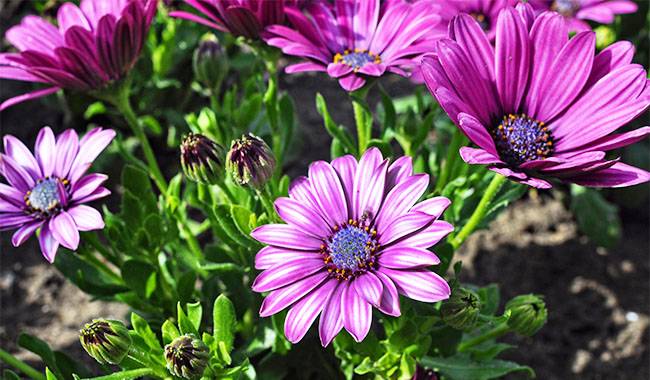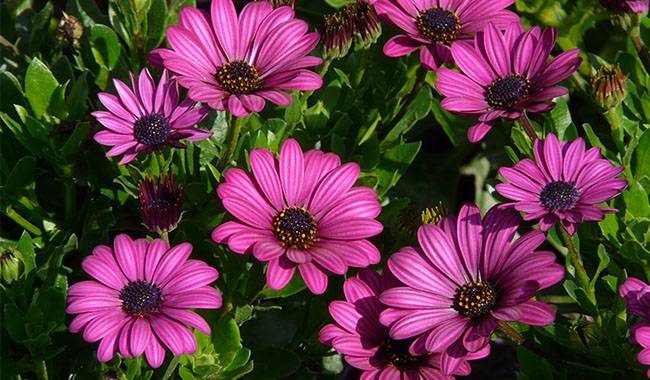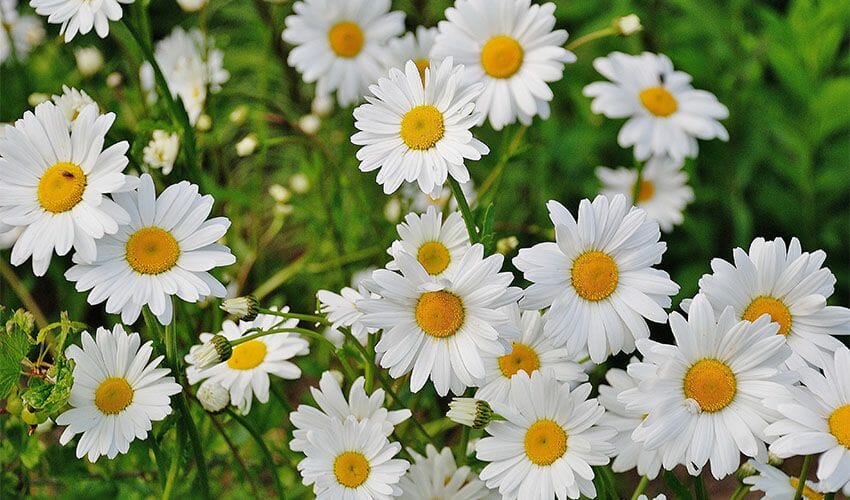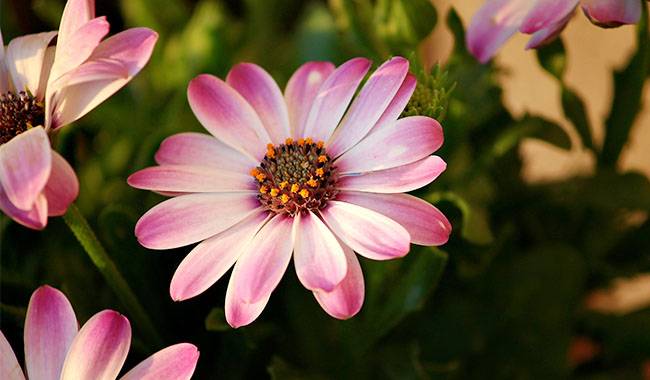
How to care for osteospermum: prevention and treatment of powdery mildew? Powdery mildew is a rapidly spreading fungal disease of plants. Initially, a white powdery coating resembling flour or powder appears on the leaves. It is easy to wipe off with your fingers, or even mistake it for ordinary dust. However, there is no way out!
Before you know it, the infection reappears, even in greater numbers, taking over more and more habitat. Not only do the leaves turn white, but so do the stems and flower stalks. Gradually the old leaves turn yellow and lose their sinew. The new leaves grow ugly and twisted. If powdery mildew is left untreated, the plant will die.
POWDERY MILDEW ON PLANTS: WHAT IS IT?
What visually appears to be a white coating is actually a fungus that hosts powdery mildews (Erysiphales). They are veritable parasites that burrow into the cells of plants and suck out their sap. As a result, just a few days after the onset of powdery mildew, the lower leaves will turn yellow, droop and shrivel.
A closer look will reveal that ulcers form on the leaves where the fungus has attached. The living tissue appears to be “eaten”. As the fungus draws nutrients from it, the plant looks frankly sick.
In addition, the parasite interferes with the process of photosynthesis by forming a white coating on the plates, which eventually leads to the decay of the plant organism. It is important to get rid of powdery mildew quickly and use all measures to compound the control, otherwise, the plant will die.
Disease Information for Powdery mildew: Where does it come from?
The spores of powdery mildew fungi often take up residence in the soil, but they do not always exhibit parasitism. In warm, sunny weather, with timely watering and fertilization, the fungi do not have a chance. They begin to attach themselves to their “hosts” and develop if.
- There is cool 60-80°F (15.5-26.5°C), humid (60-80% humidity), cloudy weather (e.g. rainy season). Weather conditions have a particularly strong impact on outdoor and balcony plants, and are less pronounced when growing in a room.
- The presence of large amounts of nitrogen in the soil.
- Growing plants in a haphazard manner.
- Non-compliance with the watering regime. For example, often watering without waiting for the top layer of soil to dry out. Or, on the contrary, the plot often overdries and later – is flooded. All this can lead to a decrease in immunity, which can lead to powdery mildew.
In addition to these external conditions, spores that have already “awakened” can get on the flowers.
- through the air (from infected trees or plants).
- By irrigation water (if spores have already entered).
- By hand (if you touch an infected plant and then touch a healthy one).
Good cultivation techniques are an important part of controlling powdery mildew.
Controlling powdery mildew is an integrated approach. First, you need to get the agronomy of the affected plants right. This means.
- wait until the topsoil is dry before watering.
- During the control of powdery mildew – abandon spraying completely.
- If possible, move the infested plants to a bright, sunny place until the powdery mildew has healed.
- Thin out thickened plants and cut off old leaves that touch the ground.
- In remission – apply less nitrogen fertilizer and more phosphorus and potassium fertilizer (with the disease – no fertilizer at all).
Any mistakes in care must be corrected, otherwise, powdery mildew will often appear. Now let’s talk about the direct treatment of the problem.
HOW TO CONTROL POWDERY MILDEW: THERAPEUTIC SPRAYING AND WATERING
To get rid of powdery mildew, you can do the following
- Tear off the affected (yellow, dull) leaves and all flower stems. If powdery mildew is present on roses, petunias, chrysanthemums, and similar shrubs, it is recommended to cut them all off. The more damaged branches you eliminate, the better the chances of cure.
- Replace the topsoil under the plants in containers, pots, or beds – whole colonies of fungal mycelium hide there.
- Spray and water the plants therapeutically with one of the treatment preparations. The spray should strive to moisten all leaves and shoots well.
It should pour down from the plant like heavy spring rain. There is a more effective method: Pour the solution into a pot and submerge the shrub in it.
Spray or water with a sprayer to moisten the soil abundantly. The walls of the pots and trays are also treated.
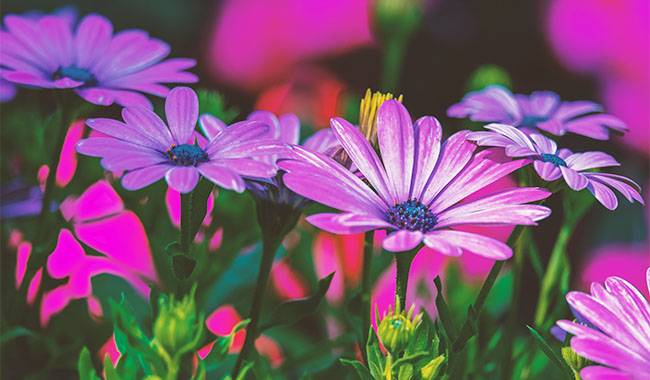
POWDERY MILDEW: FOLK REMEDY
Let’s agree right away: folk remedies for powdery mildew are effective in preventing or in the early stages of the spread of the disease. If the process of destruction began long ago, more than 5-7 days, it is no longer useful to fight in this way. It is possible to temporarily slow down the development of the disease, but not to completely eliminate it.
The most famous and effective folk remedies for powdery mildew are prepared as follows.
Soda ash and soap
Dissolve 25 grams of soda ash in 5 liters of hot water and add 5 grams of liquid soap. Spray the plants and topsoil with the cooled solution 2-3 times a week.
Use baking soda and soap
Dissolve 1 tbsp baking soda and 1/2 tsp liquid soap in 4 liters of water. Spray 2-3 times, 6-7 days apart.
Manganese solution
Dissolve 2.5 g of manganese in 10 liters of water and apply 2-3 times at 5-day intervals.
Serum solution
The serum is diluted 1:10 with water. The resulting solution forms a film on the leaves and stems, making it difficult for the fungus to breathe. At the same time, the plant itself receives additional nutrients of useful substances and becomes healthier, which affects the improvement of appearance. Treat with whey solution in dry weather, at least 3 times, at 3 days intervals.
Osteospermum decoction
Pour 100 g of Osteospermum(Blue Eyed Daisies) (fresh) into 1 liter of water and incubate for 24 hours. Put on the fire and boil for 1-2 hours. Filter and cool, dilute with water at a concentration of 1:5, and spray on bushes. The concentrate is kept in a cool place for no more than a week. Osteospermum (Blue Eyed Daisies) can be sprayed regularly in spring and summer to prevent powdery mildew. When controlling already existing diseases (at the beginning) spray effectively 3-4 times at 5 days intervals.
Copper soap solution
This remedy for powdery mildew is effective because it contains a well-known fungicide, copper sulfate. Dilute 5 grams of copper sulfate in a cup (250 ml) of hot water. Separately, dissolve 50 grams of soap in 5 liters of warm water. After that, the soap is carefully poured finely into the soap solution with constant stirring. The resulting emulsion is sprayed on the plants 2-3 times at an interval of 6-7 days.
Mustard solution
Add 1-2 tbsp of dry mustard to 10 liters of hot water. The cooling solution can be used both for spraying and watering.
Ash + soap
Mix 1 kg of ashes in 10 L of heated 86-104°F (30-40°C) water. The solution is soaked and stirred regularly for about 3-7 days. Afterward, pour the liquid composition (no ash suspension) into a clean bucket, add some liquid soap, pour into a sprayer, and treat. Spray the plants 3 times a day or every other day. In the bucket with ash particles sinking to the bottom, add 10 liters of water, stir well and use for watering.
Inject well-rotted manure (preferably cow manure)
Water the rotten manure in the ratio of 1:3 with water and insist on 3 days. Afterward, dilute the concentrate by half with water and spray it on the bushes.
Garlic infusion
Pour 25 grams of garlic (crushed) into 1 liter of water, leave it for 1 day, filter it and spray it to collect.
Powdery mildew: treat with chemicals
If powdery mildew appears on flowers, it is most effective to combat it with the help of modern fungicides. They have a destructive effect on the fungus, stopping the harmful processes in the plant cells, protecting and treating it. Spraying is done 1-4 times with an interval of 7-10 days (depending on the chosen preparation).
A well-known fungicide is phytochemicals, whose active ingredient is a concentrate of Bacillus subtilis in chalk and humic acid powders. Although phytochemicals are considered a therapeutic agent, they are practically useless against existing powdery mildew. However, as a preventive measure, it is not ineffective.




